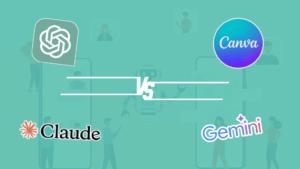Developing Customer Avatars to Better Understand Your Ideal Client
People in marketing often talk about things like customer Avatars and ideal customer profiles, but what do these terms mean and how can they help you generate leads for less?
Customer avatars are representations of your best customers, and you can use them to better understand the wants, needs, pain points, and everything else you need to know about your customers.
![]()
Once you have your avatars set up, you can continue using them in the future when you create any marketing message and can modify and add to them as your customer base changes over time.
This is important because it can help you create more targeted and more effective marketing messages, and that means more and better-qualified leads for less.
Starting with the Basics: How to Build an Ideal Customer Profile
The easiest way to understand a customer avatar is to think about it as a fictitious person who represents your ideal customers, with ideal customers being the people who want your product or service, who can pay for it, and who are decision makers who can choose to purchase what you have to offer.
Ideal clients are also typically loyal and repeat customers because they have the highest lifetime value for your business.
From another perspective, however, you can also think about ideal customers as the people you want to help the most.
The purpose of an avatar is to help you determine who to target with your marketing messages and how to do it most effectively.
Here are some of the most important factors you’ll need to know about your ideal customers in order to build an avatar:
- Demographics
- Psychographics
- What brands they support
- Hobbies and interests
- What channels they use to seek information
- Who they trust
- What sets them apart from similar people who aren’t your customers
For example, if you’re a clothing manufacturer of hip and high-end fashions, your ideal customers might be 18- to 35-year old men and women who live in urban areas, who are interested in the latest trends, and who devoutly follow fashion influencers on Instagram.
With this information collected into Avatars, you can create targeted marketing messages that will better resonate with these customers.
(download the Avatar Worksheet here)
Learning the Basics About Your Customers: Demographics
When creating a customer profile, the easiest place to start is with demographics.
This includes information about age, gender, income, profession, education level, job title, and other things about your ideal customers’ lives.
The more you know, the better, and that includes whether they’re married, if they have kids, what their political or religious beliefs are, and even if they have pets.
With every bit of data you can add to your avatars, you’ll be able to create messages that are more highly targeted, which is important when you consider that more than 70 percent of consumers prefer ads that are tailored to them.
Finding What Brands Your Customers Support
Understanding the brands your ideal customers support is about more than just learning who they buy from, but also where they interact with them.
And a brand is more than just what type of phone your ideal customers use, but also what they wear, where they eat, whether they wear jewelry, and so much more, because this can tell you a great deal about a person.
For instance, if your ideal customers choose brands that prioritize sustainable practices, eat at restaurant chains that serve healthier options, and primarily buy accessories made from hemp, then you can glean that they are environmentally and health-conscious consumers.
More than that, you can use that information when creating marketing messages by showcasing how your values are in line with theirs.
It’s also important to find out where your customers spend time online with these brands (such as websites, social media, blogs, etc.) because that can tell you where to find your ideal customers and where to direct your marketing efforts.
Hobbies and Interests
What your ideal customers do in their spare time can provide a wealth of insights into who they are, what’s important to them, where they spend their time, and how to best communicate with them.
For example, if your ideal customers are movie buffs who spend their Saturdays in front of the television watching foreign films, then your marketing would be vastly different than if they were older people who enjoyed activities like knitting and playing bridge at the community center.
Interests and hobbies can extend to a number of things, including what type of music your customers listen to, whether they have niche interests, what sports teams they support, and beyond.
When creating your Avatar, it’s important to thoroughly explore these interests.
Identifying the Best Channels to Reach Your Audience
Marketing happens on a number of different platforms these days, and that includes the various social media sites, physical locations, and even the people your customers trust and listen to. When your customers spend time on specific social sites, this can make your job a lot easier.
But there are other places where you can reach your audience, and it all depends on how they consume information.
For instance, do they go to the theater, the opera, or the movies?
Do they watch movies, shows, and YouTube videos?
Do they follow certain influencers on Facebook?
Or, do they prefer more traditional media like television, books, magazines, print news, or conferences?
Knowing what channels your customers use will tell you where to direct your messages.
Weeding Out People Who Only Look Like Your Ideal Customers
One very important aspect of creating avatars that people sometimes overlook is answering this question:
What does my ideal customer do that nobody else does?
You can also phrase it in the form of a statement: “My ideal customer would do (fill in the blank) but nobody else would.”
This is crucial because it will help you identify people who may look like your ideal customers but aren’t, and that will allow you to avoid targeting the wrong audience.
For instance, maybe your ideal clients attend a specific conference, whereas people who just look like your ideal customers don’t.
This can apply to a number of different things, such as what social media sites your customers use, whether they follow a specific person on Facebook, or maybe even a special hobby or interest that sets them apart from others who appear similar.
When you want to know how to get ideal customers, the answer starts with learning everything you can about these people and building avatars that can help you better understand and communicate with them.
Avatars are representations of your ideal customers that can tell you everything you need to know to create targeted marketing messages, including who they are, what their interests are, what brands they support, and where they hang out (channels), and from there you’ll have a good idea of what kind of people you’re dealing with and what their goals are.
Most companies have multiple avatars to represent different ideal customer segments, and these various customer profiles will help you understand their unique needs and target them in specific ways to generate leads for less.
If you want to know how to create a customer avatar, download your ideal customer profile worksheet today to get started.
About The Author
Marketing Team
The AOK Marketing Team is a diverse group of amazing individuals driven to help all of our clients succeed. Great people are everywhere, and we believe that people should control their workday, their work environment, and where they live. We have team members in 9 countries: United States, Canada, Egypt, Belgium, Ireland, Australia, India, Pakistan, and Hong Kong.
How can we help you?




